The Best Fluffy Pancakes recipe you will fall in love with. Full of tips and tricks to help you make the best pancakes.
Ramadan Foods Rich in Tradition from Sudan: Must-Try Dishes
Ramadan in Sudan is celebrated with deep spirituality, strong community ties, and a rich culinary heritage. The iftar and suhoor meals include time-honored dishes that reflect the country’s diverse flavors and cultural influences. From the hearty Aseeda to the refreshing Hilumur, Sudanese cuisine plays a key role in uniting families and communities during this holy month. In this guide, we explore Ramadan foods rich in tradition from Sudan and their significance.
How Is Ramadan Observed in Sudan?
Ramadan in Sudan is a deeply spiritual and communal experience marked by traditions that unite families and neighbors. Fasting from sunrise to sunset is central, as it is in other Muslim-majority countries, but the communal aspect is especially cherished. After the evening call to prayer, Sudanese families break their fast with a meal known as “iftar,” often starting with tamarind juice, dates, and porridge called “aseeda.”
The streets of Sudan come alive during Ramadan, with people sharing food and drinks freely, ensuring everyone has something to break their fast. Charity plays a key role, as it is common for Sudanese communities to host large public feasts for the less fortunate. Evening prayers, or “Taraweeh,” are performed in mosques, creating a sense of unity and devotion.
Ramadan in Sudan isn’t just about fasting; it’s a time of reflection, kindness, and connection, honoring religious obligations and cultural traditions. This blend of faith and community makes it a special time nationwide.
What Are the Traditional Ramadan Customs in Sudan?
One of the most notable customs is the communal breaking of the fast, known as iftar. Families, friends, and neighbors gather to share meals, often served on large plates to emphasize unity. Popular dishes include asalaya (a sweet made from sugarcane), kisra (a type of flatbread), and tamayya (Sudanese falafel).
Another unique tradition is the practice of Gurkha, where food is passed from one hand to another as a gesture of care and hospitality. Sudanese communities also prioritize charity during Ramadan, with many donating food and essentials to those in need. Mosques and homes are often filled with the melodies of Quran recitation, creating an atmosphere of peace and reflection. These customs reflect the warmth and generosity of Sudanese culture, making Ramadan a truly special time of the year.
What Are the Best Foods to Try During Ramadan in Sudan?
Sudan boasts a rich culinary tradition, and Ramadan is the perfect time to experience its diverse and flavourful dishes. One of the most iconic foods is Aseeda, a simple yet satisfying dish made from sorghum or wheat flour. It is often served with a savory okra-based stew or a tomato sauce called Mulah. Another must-try is Kisra, a fermented flatbread made from sorghum flour. It is a staple on Ramadan tables and pairs perfectly with various stews and soups.
For drinks, Hulu Mur, a sweetened fermented sorghum drink, is particularly popular during Ramadan for its unique flavor and energizing qualities. No Sudanese iftar would be complete without sweet treats, such as Gurasa — a pancake-like bread often drizzled with honey or served alongside fruit preserves. These beloved dishes nourish the body after a day of fasting and reflect the heartwarming hospitality central to Sudanese culture during Ramadan.
Aseeda
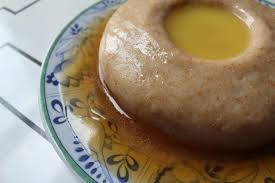
Aseeda is a treasured dish in Sudanese cuisine, particularly during the holy month of Ramadan. Prepared using simple ingredients such as sorghum or wheat flour and water, this hearty meal exemplifies the beauty of minimalism in cooking. Its smooth, dough-like texture is achieved through continuous stirring, resulting in a comforting base that pairs superbly with various accompaniments. Aseeda is often served with Mulah, a rich okra-based stew, or sometimes a tangy tomato-based sauce, depending on regional preferences. This dish is more than just a meal; it embodies the spirit of togetherness as families and friends gather to share its warmth and flavor after a day of fasting.
Kisra
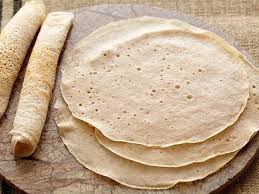
Kisra is another staple of Sudanese cuisine, cherished for its versatility and cultural significance. This thin, fermented flatbread is made primarily from sorghum flour, a grain essential to Sudan’s culinary traditions. The preparation of Kisra requires skill and patience, as the batter is carefully fermented to achieve its distinctive tangy flavor and delicate texture. Typically, it is cooked on a flat, heated surface, resulting in a light, pliable bread that pairs perfectly with various stews and sauces, including the popular Mulah. Beyond its role as a delicious accompaniment, Kisra represents the resourcefulness and communal cooking practices deeply rooted in Sudanese heritage, often bringing families together around shared meals.
Gurasa
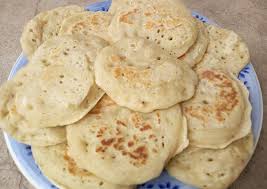
Gurasa is a beloved type of bread in Sudan, known for its soft, pillowy texture and rounded shape. It is often likened to a pancake or flatbread made from wheat flour but with a slightly thicker and fluffier consistency. Gurasa is versatile and widely enjoyed across the country, usually serving as a base for various meat and vegetable stews or eaten with honey or sesame oil for a delightful snack. Its simplicity and comforting flavor have made it a staple in many households, reflecting the importance of accessible and hearty foods in Sudanese cuisine. Gurasa is not just a food item but a symbol of nourishment and tradition, often tied to gatherings where food plays a central role in fostering connection and hospitality.
foul medames
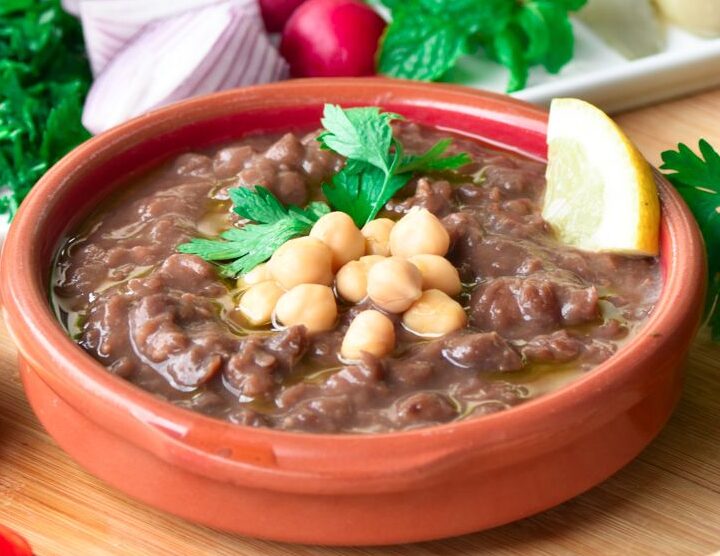
Foul Medames is a cherished Sudanese dish with roots that trace back to ancient times, making it a staple in everyday meals and special occasions. Made primarily from slow-cooked fava beans, this dish is typically seasoned with garlic, lemon juice, and spices, creating a rich and hearty flavor profile. It is often served with a sesame oil drizzle or fresh herbs, adding a touch of freshness and indulgence. Foul Medames are commonly enjoyed alongside bread like Kisra or Gurasa, allowing diners to scoop and savor each mouthful. It is not just a meal but an experience steeped in tradition, representing Sudan’s emphasis on shared, nourishing, and flavourful cuisine.
Tamia (Sudanese Falafel)
Tamia, often called Sudanese Falafel, is a beloved vegetarian delight that has a special place in Sudanese cuisine. Made from ground fava beans or chickpeas, this dish is seasoned with an aromatic blend of coriander, cumin, and garlic, giving it its distinct and bold flavor. The mixture is shaped into small patties or balls and deep-fried to achieve a delightful, crispy exterior while maintaining a soft and tender center. Tamia is frequently served as a snack, appetizer, or part of a larger meal, often accompanied by fresh salads, tangy dips, or wrapped in Kisra for a wholesome bite. It is a testament to the versatility of simple ingredients, offering both nourishment and flavor, while its widespread enjoyment showcases its cultural significance in Sudanese households.
Hilumur
Hilumur is a cherished traditional Sudanese beverage with a special place, particularly during the holy month of Ramadan. Made from fermented sorghum flour and a medley of spices such as ginger, cinnamon, and cardamom, this drink is both refreshing and nourishing. Its preparation involves patience and care, with the fermentation process enhancing its distinct tangy and slightly sweet flavor. During Ramadan, Hilumur is a staple on Iftar tables, offering a replenishing burst of energy after a day of fasting. Its rich taste and cultural significance make it an enduring symbol of togetherness and celebration in Sudanese households.
Aradeeb (Baobab Drink)
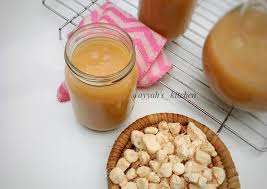
During Ramadan, Aradeeb takes on a vital role in Sudanese households. This nourishing drink is a standard feature on Iftar tables, helping to rehydrate and revitalize the body after a long day of fasting. Its high vitamin and mineral content makes it ideal for replenishing energy and maintaining overall health during the holy month. The tangy, refreshing taste of Aradeeb not only quenches thirst but also adds a delicious and wholesome element to the Ramadan dining experience. For many, the presence of Aradeeb during Ramadan reflects a cherished tradition that brings comfort and strengthens the bonds of family and community.
Mullah (Meat Stew)
Mullah, a rich and hearty meat stew, is another cherished dish that plays a significant role during Ramadan in Sudan. Often prepared with lamb or beef, tender vegetables, and a mix of aromatic spices, this dish provides a comforting and nourishing option for Iftar. The slow cooking process imbues the stew with deep, flavourful notes, making it a satisfying way to break the fast. Mullah is traditionally served alongside staple foods such as kisra (a fermented bread) or asida (doughy porridge), creating a balanced and fulfilling meal. Beyond its nutritional value, sharing Mullah at the table symbolizes togetherness, as families and communities come together to enjoy this beloved dish, reflecting the spirit of unity and gratitude during the holy month.
conclusion
The culinary traditions of Ramadan in Sudan reflect much more than just nourishment; they represent a deep-rooted connection to culture, family, and faith. Dishes like Aradeeb and Mullah provide sustenance after a day of fasting and serve as a reminder of shared values and the importance of togetherness. These cherished meals turn every Iftar into a celebration of gratitude, unity, and spirituality, highlighting the essence of the holy month in a truly special way. Through time-honored recipes and communal dining, Ramadan continues to be a period of reflection, connection, and cherished memories for families and communities across Sudan.
Explore More Delicious Ramadan Dishes:
Signature Ramadan Meals of Tunisia
Must-Try Ramadan Dishes in Algeria
Historical Ramadan Dishes of Egypt
Must-Try Ramadan Dishes in Qatar | Traditional Qatari Iftar Foods
Ramadan Delicacies from Jordan You Need to Taste
Iconic Ramadan Dishes You Can’t Miss in Oman
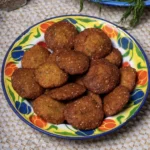


[…] Ramadan Foods Rich in Tradition from Sudan: Must-Try Dishes […]
[…] Ramadan Foods Rich in Tradition from Sudan: Must-Try Dishes […]